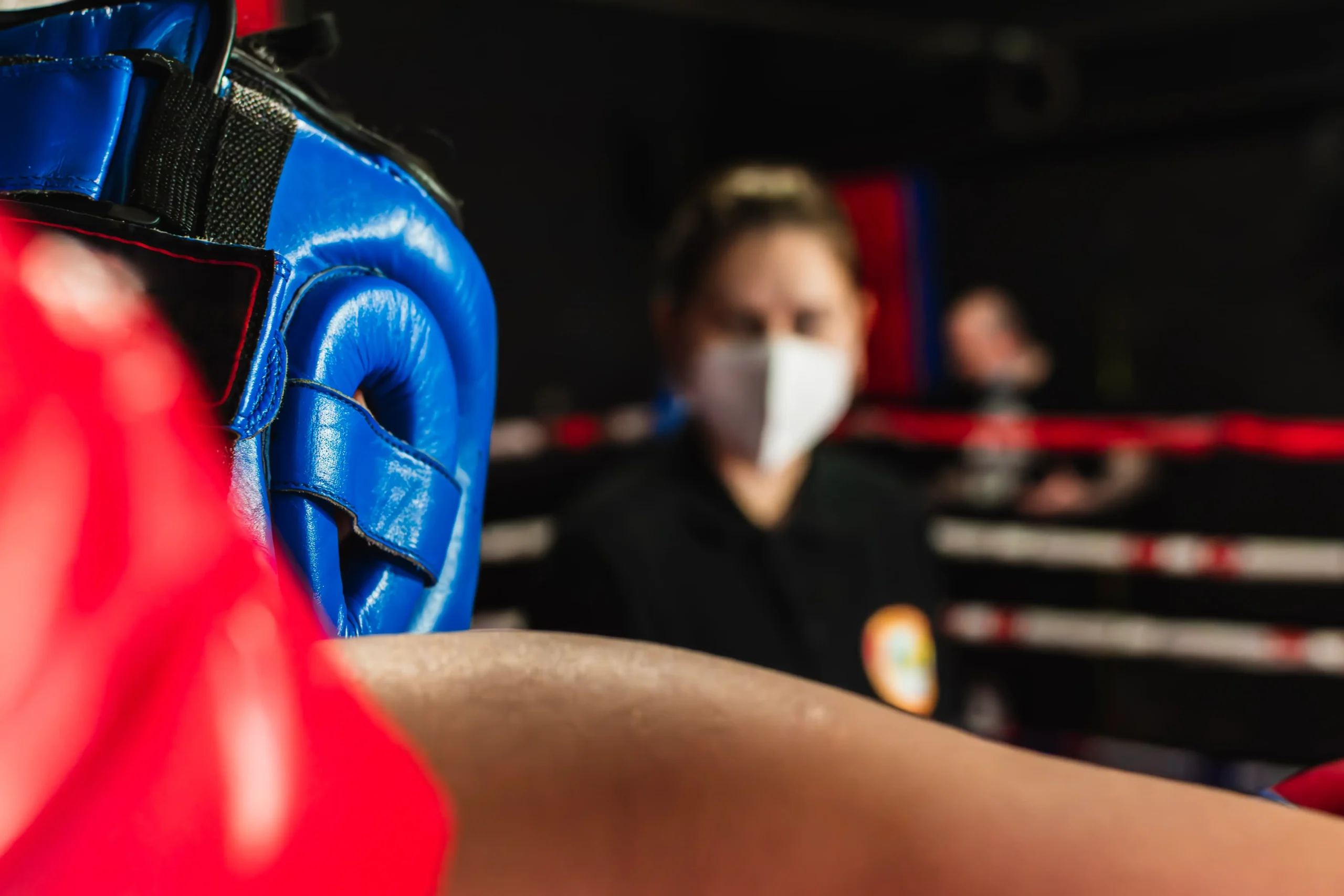Stuck trying to choose between the artful ground control of Brazilian Jiu-Jitsu and the raw power of boxing? Wanna get in shape, learn self-defense, or explore combat sports?
The decision can feel like a major crossroads. Should you focus on punches, footwork, and cardio with boxing? Or explore submissions, grips, and ground control with BJJ?
And let’s not even talk about the potential injuries. Brain trauma from boxing or joint strains from grappling, the risks add another layer of hesitation
Here, I’ll give you a clear, unbiased comparison of boxing and Brazilian jiu-jitsu, and focus on the techniques, training styles, and how to interpret your goals. Let’s start!
Table of Contents
Brazilian Jiu-Jitsu (BJJ)
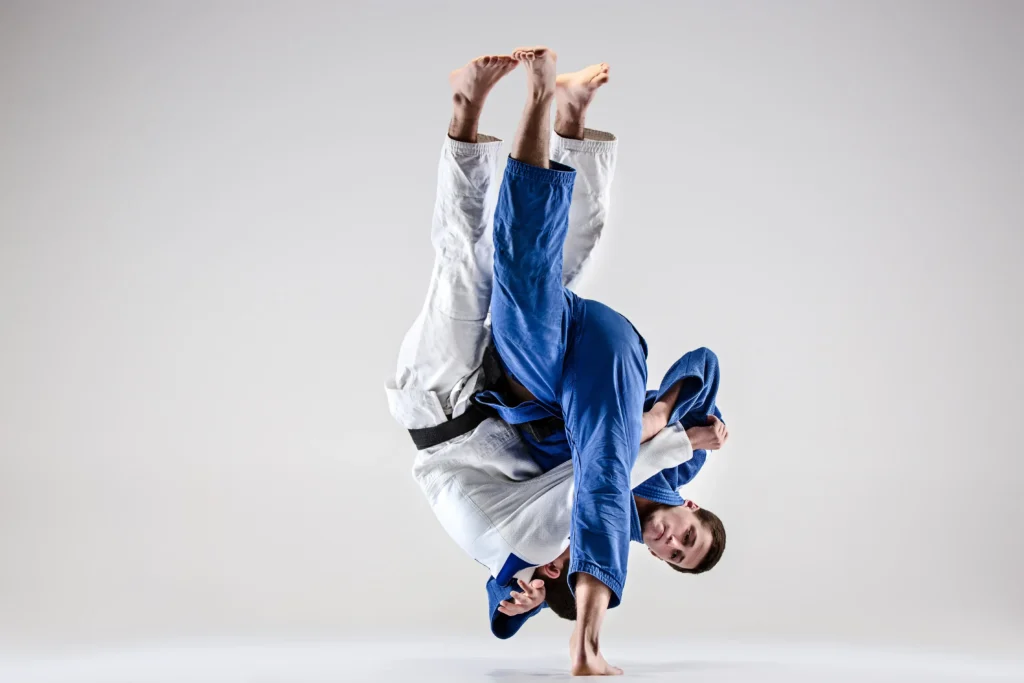
Philosophy and History
Brazilian Jiu-Jitsu (BJJ) is a martial art rooted in the principle that a smaller, weaker individual can successfully defend against a larger, stronger opponent by using technique, timing, and positioning.
Its origins trace back to early 20th-century Japan, where judo master Mitsuyo Maeda introduced judo techniques to Brazil. Carlos Gracie, inspired by Maeda’s teachings, began adapting these techniques, and put emphasis on ground fighting and submissions.
His brother, Hélio Gracie, further refined these methods to suit his smaller physique, and it developed what we now recognize as BJJ.
Primary Techniques
1. Grappling and Ground Fighting
BJJ’s core lies in its ground-based techniques. Practitioners aim to bring opponents to the ground, as it neutralizes size and strength advantages.
The main positions include:
- Guard: A position where the practitioner is on their back, using their legs to control the opponent.
- Mount: Sitting atop the opponent’s chest, offer dominant control.
- Side Control: Lying perpendicular to the opponent, to control their torso.
2. Takedowns and Throws
BJJ is ground-focused, but it incorporates takedowns and throws. They are often derived from judo and wrestling, to bring the fight to the ground.
3. Submissions
BJJ is renowned for its submission techniques, which you can categorize into:
- Joint Locks: Techniques that hyperextend or twist joints, such as armbars and kimuras.
- Chokes: Methods that cut off airflow or blood flow, like the rear-naked choke and triangle choke.
4. Sweeps and Reversals
From the guard position, practitioners employ sweeps to reverse positions, to transition from a defensive to an offensive stance.
Self-Defense Context
In real-world scenarios, BJJ emphasizes:
- De-escalation: Using technique to control an aggressor without causing harm.
- Control: Neutralize threats by taking the fight to the ground.
- Safety: Minimize injury risks by focusing on control and submission rather than strikes.
Objectives
Sport: In competitive settings, the goal is to submit the opponent or accumulate points through dominant positions and controlled techniques.
Self-Defense: The primary aim is to neutralize threats, control an attacker, and avoid strikes by taking the fight to the ground.
Boxing (Punch and Precision)
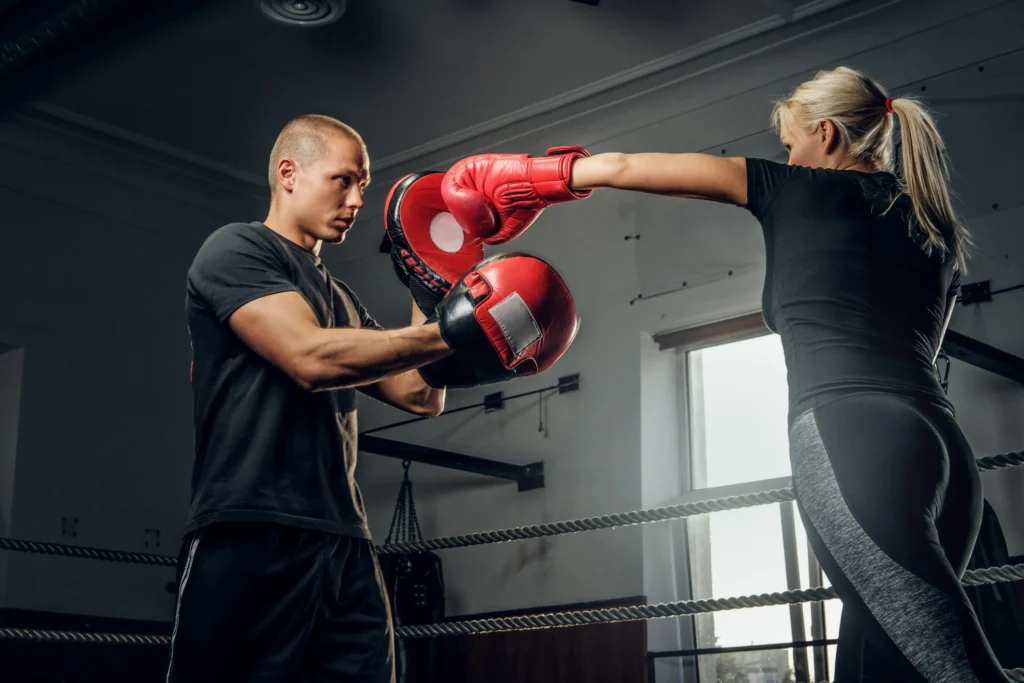
Philosophy and History
Boxing is quite an old and respected combat sports. The roots stretch back to ancient civilizations. In its modern form, boxing revolves around the use of the hands for stand-up striking. The core philosophy is based on controlled aggression, combine speed, power, and precision. Throw punches, but with timing, technique, and outsmarting your opponent.
Boxing as we know it evolved over centuries. The ancient Greeks had a form of boxing during the Olympics. The Marquess of Queensberry Rules, introduced in 1867, standardized the sport. They mandated the use of gloves, timed rounds, and a defined ring
Through the years, boxing has evolved into a global spectacle. The legends like Muhammad Ali, Mike Tyson, and Floyd Mayweather contributed their mark on the sport.
Primary Techniques
1. Striking
The essence of boxing lies in striking, using only the fists. But boxing combines power, accuracy and form. The basic punches include:
- Jab: A quick, straight punch used to set up other strikes and control distance.
- Cross: A powerful straight punch thrown with the rear hand, often following a jab.
- Hook: A short, curved punch aimed at the opponent’s head or body.
- Uppercut: A punch delivered from underneath, targeting the chin or body.
Boxers often string these punches together into combinations. They aim for speed and fluidity and maintain the right form for each strike.
2. Footwork
Footwork in boxing is everything. A fighter’s ability to move effectively can make or break a match. Key elements of footwork include:
- Movement: Step in and out, maintain balance while positioning for the next punch.
- Angles: Create new angles to land punches while avoiding the opponent’s strikes.
- Lateral Movement: Moving side-to-side to avoid straight-line attacks.
- Pivots: Quickly rotating to change direction and outmaneuver an opponent.
3. Defense
Effective defense is just as decisive as offense in boxing. The goal is not only to hit but to avoid being hit. The defensive techniques include:
- Head Movement: Slips (dodging punches), rolls (dodging and countering), and duck to avoid incoming strikes.
- Blocking and Parrying: Use the hands and arms to deflect or absorb punches.
- Clinching: When close to the opponent, boxers may clinch to disrupt the opponent’s rhythm and catch a breather.
Objectives
Sport: In a boxing match, the aim is to either knock out your opponent or win by points. Points are awarded if you put clean, effective strikes and overall dominance in each round. A knockout (KO) happens when a boxer is unable to continue the fight after a powerful blow. But even without a KO, a skilled boxer can win by outpacing the opponent in terms of punches and defense.
Self-Defense: In real-world scenarios, boxing is great for self-defense. The sport teaches you how to maintain distance, how to deliver decisive, powerful strikes to create escape opportunities, and how to defend against incoming attacks. Knowing how to move, react, and strike quickly can give you an upper hand when it matters most.
BJJ vs. Boxing: A Head-to-Head Comparison
| Feature | Brazilian Jiu-Jitsu (BJJ) | Boxing |
| Focus | Grappling, ground fighting, submissions, positional control. | Stand-up striking (punches), footwork, head movement, defense. |
| Range of Combat | Close-quarters, clinch, ground. | Stand-up, mid to long range. |
| Techniques | Takedowns, sweeps, reversals, joint locks, chokes, escapes. | Jabs, crosses, hooks, uppercuts, slips, rolls, blocks, parries, pivots. |
| Goal in Conflict | Control, incapacitate via submission, escape danger on the ground. | Knockout, create space, incapacitate via strikes, defend against strikes. |
| Physical Demands | Endurance, core strength, flexibility, grip strength, muscular endurance, problem-solving under pressure. | Cardiovascular endurance, explosive power, hand-eye coordination, balance, agility, mental toughness. |
| Common Injuries | Joint sprains (fingers, elbows, knees), mat burns, cauliflower ear, neck strains, rib injuries. | Concussions, cuts, bruises, hand injuries (knuckles, wrists), shoulder injuries, nose fractures. |
| Typical Training | Drilling techniques, positional sparring, rolling (live grappling), conditioning. | Bag work, pad work, jump rope, shadowboxing, sparring (live striking), conditioning. |
| Gear Required | Gi (for traditional BJJ), rash guard, shorts, mouthguard, (optional) knee pads, headgear for sparring. | Boxing gloves, hand wraps, mouthguard, headgear, appropriate footwear. |
| Learning Curve | Steep initial learning curve due to complex techniques and positions, but rapid progress once fundamentals click. | Relatively straightforward fundamentals, but mastery of timing, distance, and defense takes years of dedicated practice. |
| Core Self-Defense Principle | Control the opponent, take them to the ground, neutralize their striking, apply submissions or escape. | Maintain distance, strike to deter or incapacitate, move out of danger’s way. |
The choice between BJJ and Boxing depends on your goals:
- Self-Defense: BJJ offers effective control techniques, especially in close-quarters situations.
- Fitness: Boxing provides an excellent cardiovascular workout and builds explosive power.
- Skill Development: BJJ emphasizes technique and adaptability, while Boxing hones timing and precision.
Many practitioners find value in cross-training both disciplines. As they complement each other well. Boxing can improve your striking skills, and BJJ can improve your ground game.
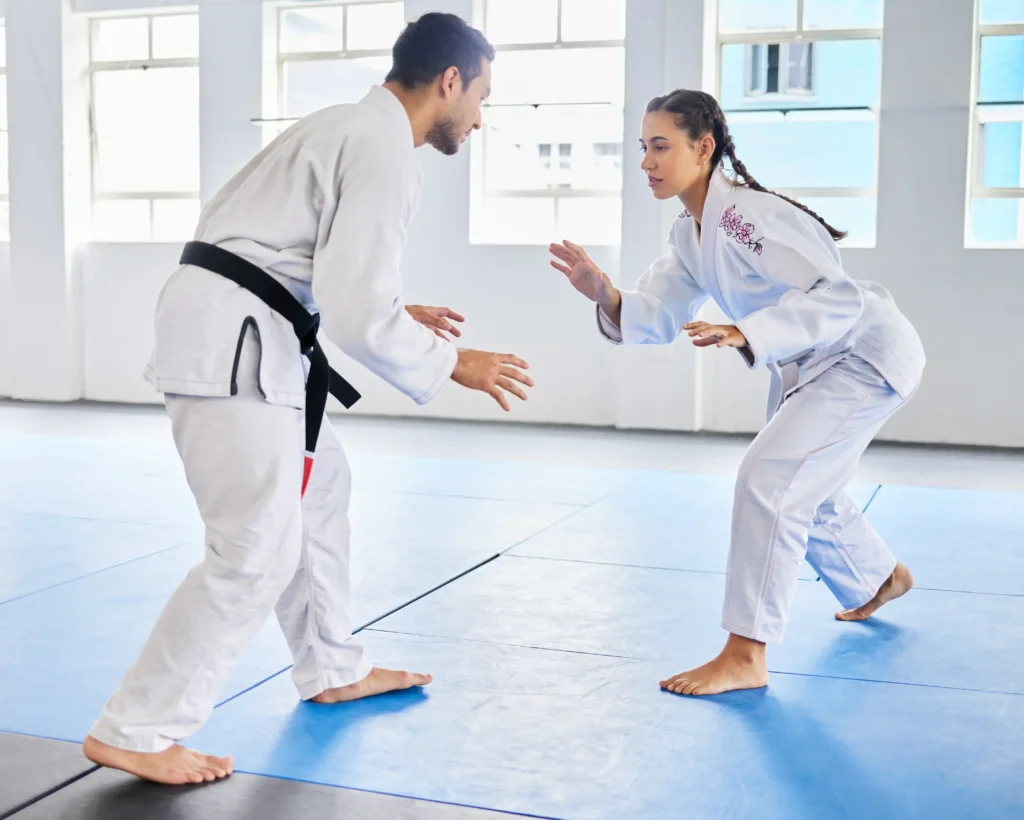
Efficiency in Self-Defense Scenarios
When it comes to self-defense, both Boxing and Brazilian Jiu-Jitsu (BJJ) excel in different aspects of a confrontation.
Boxing is effective in situations where you need to maintain distance. It teaches you how to control the engagement with powerful strikes, quick footwork, and sharp head movement. It is great to deter or incapacitate an attacker before the situation escalates. However, its focus is primarily on stand-up combat, which can be a limitation if the fight goes to the ground.
Brazilian Jiu-Jitsu prepares you for scenarios where the fight ends up on the ground. It focuses on leverage and technique, and allow you to control and submit larger or stronger opponents. It is effective in one-on-one situations, to neutralize threats without causing unnecessary harm.
Training and Learning Curve: What to Expect
Training BJJ and Boxing have their own rhythm, intensity, and progression. Here’s a breakdown of what to expect:
Brazilian Jiu-Jitsu (BJJ)
Class Structure: A typical BJJ class unfolds in a series of structured segments:
- Warm-Up (10–15 minutes): Begins with dynamic movements like shrimping, bridging, and breakfalls to prepare the body for grappling. The phase also includes mobility drills targeting hips, shoulders, and neck to improve flexibility and prevent injuries.
- Technique Instruction (15–20 minutes): The instructor demonstrates specific techniques, such as sweeps, submissions, or escapes. Students then pair up to practice these moves, focusing on precision and form.
- Positional Sparring (10–15 minutes): Practitioners engage in controlled sparring, starting from specific positions and work on particular techniques or scenarios.
- Live Rolling (15–20 minutes): It is full-intensity sparring, and allows students to apply techniques in a dynamic, unpredictable environment.
- Cool-Down (5–10 minutes): The session concludes with stretching and breathing exercises to aid recovery.
Time to Proficiency: Achieving a blue belt in BJJ typically takes 1–3 years. It reflects the discipline’s emphasis to master an array of techniques and positions. Progression is often measured by belt ranks. The black belt status requires 8–12 years of consistent training.
Boxing
Class Structure: Boxing classes are designed to build striking skills and conditioning:
- Warm-Up (10–15 minutes): Includes jump rope, shadowboxing, and calisthenics to increase heart rate and prepare the body for intense activity.
- Technical Drills (15–20 minutes): It focuses on punch combinations, footwork, and defensive maneuvers. Trainers often use focus mitts to develop timing and accuracy.
- Bag Work (10–15 minutes): Utilizes heavy bags to practice power and endurance, and refine punching technique and rhythm.
- Pad Work (10–15 minutes): One-on-one sessions with a coach using mitts to simulate real fight scenarios, to improve reaction time and strategy.
- Sparring (Optional, 10–15 minutes): Controlled live practice to apply techniques in a realistic setting.
- Conditioning (10 minutes): Exercises like sprints or strength training to build overall fitness and stamina.
Time to Proficiency: Boxing fundamentals can be grasped relatively quickly. Mastering timing, distance, and defensive reflexes takes years of dedicated practice. Advancement is often gauged through sparring experience and competition.
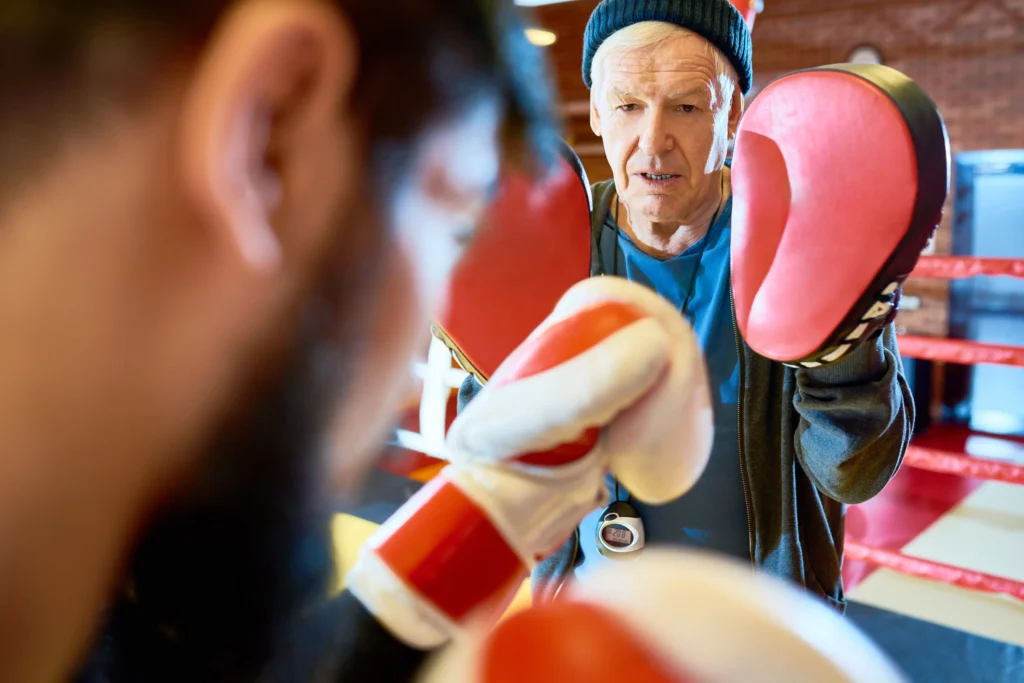
Injury Risks and Safety Considerations
Common Injuries
Brazilian Jiu-Jitsu (BJJ):
Joint Injuries: Common injuries include sprains and strains in the fingers, elbows, shoulders, and knees, due to submissions like armbars or kimuras.
Neck and Spine Issues: Deep stacking or neck cranks can lead to cervical strains or more severe spinal injuries.
Boxing:
Head Injuries: Concussions and facial lacerations are prevalent, especially in professional bouts.
Hand and Wrist Injuries: Fractures, such as a “boxer’s fracture,” often occur from improper punching technique.
Shoulder Strains: Repetitive punching motions can lead to rotator cuff injuries.
Safety Tips and Precautions
Proper Technique: Executing a submission in BJJ or a punch in boxing, correct form reduces the risk of injury.
Quality Gear: Invest in well-fitting equipment: BJJ gi or rash guard, boxing gloves, and hand wraps.
Warm-Up and Cool Down: Engage in dynamic stretches before training and static stretches afterward to maintain flexibility.
Listen to Your Body: Avoid pushing through pain. Early intervention can prevent long-term damage.
Regular Check-Ups: Consult with healthcare professionals if injuries occur for proper treatment and recovery.
Expert Advice
Both sports require commitment to safety protocols. For instance, BJJ practitioners should tap early to avoid joint injuries, while boxers should be cautious of repeated head impacts leading to concussions.

Which Martial Art is Right for You?
The decision hinges on your personal goals, physical attributes, and preferences. Here’s how to navigate this choice:
Personal Goals:
Self-Defense: BJJ excels in real-world scenarios, especially when fights go to the ground. Its techniques allow you to control and neutralize opponents without relying on size or strength.
Fitness: Boxing offers intense cardiovascular workouts, improving endurance and explosive power. BJJ provides a full-body workout, improving flexibility, core strength, and mental resilience.
Competition: Both sports have vibrant competitive scenes. Boxing competitions focus on striking, and BJJ tournaments emphasize grappling and submissions.
Physical Attributes:
Boxing: Suited for individuals with quick reflexes, strong cardiovascular health, and a preference for stand-up combat.
BJJ: Ideal for those who prefer grappling, have good flexibility, and are interested in techniques that leverage technique over brute strength.
Age and Fitness Level
Both disciplines are adaptable for various age groups and fitness levels. But check the intensity of training sessions. Boxing involves more high-impact activities, and BJJ’s emphasis on technique can be gentler on the body.
Preferences:
Reflect if you enjoy striking or grappling. If you prefer stand-up combat and striking, boxing aligns with your interests. If you lean towards ground control and submissions, BJJ is more suitable.
Time and Financial Investment:
Boxing requires gloves, hand wraps, and appropriate footwear. Training sessions may be more frequent, and impact time commitment.
BJJ requires a gi (for traditional training) or rash guard (for no-gi). Training sessions often include live sparring, which can be time-intensive.
Before committing, attend trial classes in both disciplines. Experience the training environment, coaching style, and community to choose which martial art resonates with you.
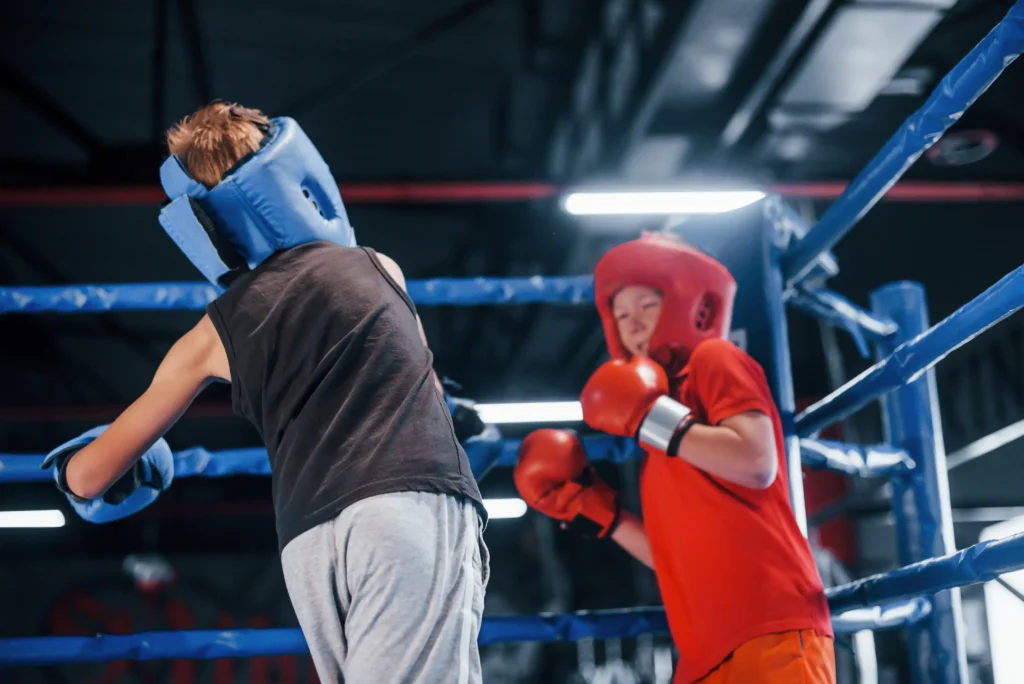
The Power of Both: Try Cross-Training
Combine Brazilian jiu-jitsu and boxing for a powerful synergy. You can blend the strategic ground control of BJJ with the dynamic striking of Boxing. It improves your adaptability in various combat scenarios, and equip you to handle both stand-up and ground engagements.
Physically, this cross-training develops endurance, core strength, flexibility, and explosive power. Mentally, it fosters resilience, strategic thinking, and adaptability. Many professional MMA fighters focus on both disciplines to become well-rounded athletes.
FAQs
Which is Better, Brazilian Jiu-Jitsu or Boxing?
Depends on your objectives. Boxing is practical for self-defense, for striking and distance management. Brazilian Jiu-Jitsu (BJJ) help control and submit opponents, especially in one-on-one situations.
Can Brazilian Jiu-Jitsu Beat Boxing?
In a controlled environment like the UFC, BJJ has proven effective in ground combat. However, in a street fight, boxing offers an advantage. The effectiveness depends on the context and the practitioner’s ability to apply their skills.
Who Wins in a Street Fight, BJJ or Boxing?
In a street fight, boxing often has the edge due to its emphasis on striking, footwork, and maintaining distance. Especially in unpredictable environments (on concrete or with obstacles). BJJ practitioners may struggle if the fight doesn’t go to the ground or if there are multiple attackers.
What Fighting Style can Beat BJJ?
BJJ is effective, it has limitations. Boxing can be effective if the fight remains standing, due to powerful strikes and mobility. Other martial arts like Muay Thai or Krav Maga, due to striking and situational awareness can also be effective against BJJ in some scenarios.
What is Safer, Boxing or BJJ?
Both sports have inherent risks. Boxing carries a higher risk of head injuries, like concussions, due to repeated impacts. BJJ, safer in terms of head trauma, can lead to joint injuries and strains. Follow proper techniques and safety protocols.
Summing Up
The choice of Brazilian jiu-jitsu and boxing depends on how you align your training with your personal goals. BJJ offers a strategic, ground-focused approach, if you seek control and submission techniques. Boxing emphasizes powerful striking and footwork, and on individuals interested in stand-up combat and cardiovascular conditioning.
Your decision should reflect your objectives, and the best choice is one that motivates you to train consistently and passionately. So, step into a class, experience both, and let your journey in martial arts begin!

